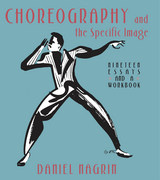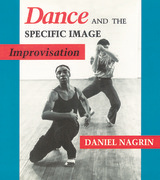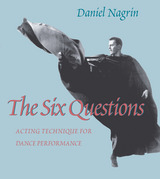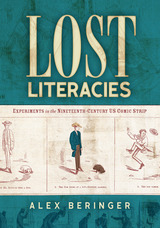
Spiced with wit and strong opinions, Choreography and the Specific Image explores, in nineteen far-ranging essays, the art of choreography through the life’s work of an important artist. A career of performance, creativity, and teaching spanning five decades, Nagrin reveals the philosophy and strategy of his work with Helen Tamiris, a founder of modern American dance, and of Workgroup, his maverick improvisation company of the 1970s. During an era when many dancers were working with movement as abstraction, Nagrin turned instead toward movement as metaphor, in the belief that dance should be about something. In Choreography and the Specific Image, Nagrin shares with the next generation of dancers just how that turn was accomplished.
“It makes no sense to make dances unless you bring news,” he writes. “You bring something that a community needs, something from you: a vision, an insight, a question from where you are and what churns you up.” In a workbook following the essays, Nagrin lays out a wealth of clear, effective exercises to guide dancers toward such constructive self-discovery. Unlike all other choreography books, Nagrin addresses the concerns of both modern and commercial (show dance) choreographers. “The need to discover the inner life,” he maintains, “is what fires the motion.”
This is Nagrin’s third book of a trilogy, following Dance and the Specific Image: Improvisation and The Six Questions: Acting Technique for Dance Performance. Each focuses on a different aspect of dance—improvisation, performance, and choreography—engaging the specific image as a creative tool.
Part history, part philosophy, part nuts-and-bolts manual, Choreography and the Specific Image will be an indispensable resource for all those who care passionately about the world of dance, and the world at large.

Dance and the Specific Image includes over one hundred improvisational structures that Nagrin created with his new company, the Workgroup, and has taught in dance classes and workshops all over the United States. Designed primarily for dancers, many can be adapted for actors and even musicians.
In the 1960s, at a time when many modern dancers were working with movement as abstraction, Nagrin turned instead toward movement as metaphor. His passionate belief that dance must speak of people led him to found the Workgroup, a small company of dancers who, in the early 1970s, devoted themselves to the practice and performance of improvisation.
Nagrin invites the reader into the mind of a dancer totally absorbed in his art, one who writes with wisdom and authority about what it means to be an artist.

In five parts, the book first examines the personal essentials demanded by dance. The second part looks at the pitfalls inherent in the act of performing from vanity to self-hatred. The third part, the core of the book, poses six questions: Who? is doing what? to whom? where and when? and why? and against what obstacle? In the fourth part, Nagrin looks at the tools for working on the role, and the fifth part enters into the very act of performing. All of the work is handled in terms of movement alone: no dialogue or scenes from plays are used.
The Six Questions is a companion piece to Nagrin's other works, How To Dance Forever, and Dance and the Specific Image: Improvisation. Together they present an invaluable teaching and learning tool for anyone in love with dance.
READERS
Browse our collection.
PUBLISHERS
See BiblioVault's publisher services.
STUDENT SERVICES
Files for college accessibility offices.
UChicago Accessibility Resources
home | accessibility | search | about | contact us
BiblioVault ® 2001 - 2024
The University of Chicago Press









